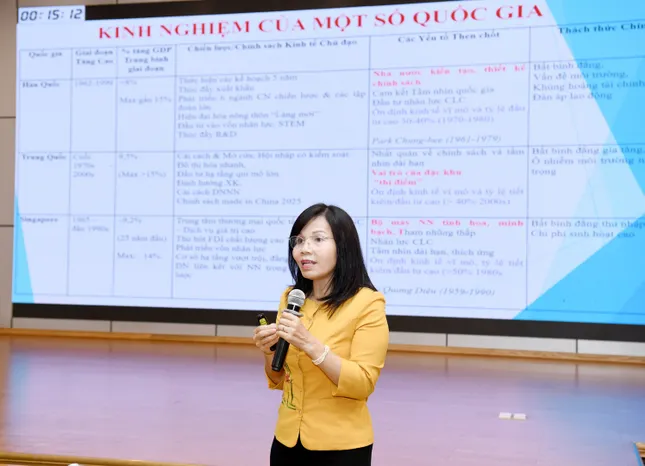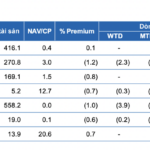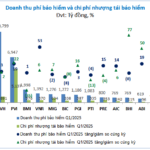Three Scenarios for 2045: Escaping the Middle-Income Trap
At a policy dialogue on high and sustainable economic growth towards 2045, hosted by the National Economics University on June 3, experts warned that without a breakthrough acceleration phase, Vietnam risks falling into the “middle-income trap,” where growth is insufficient to surpass the threshold of a developed economy.
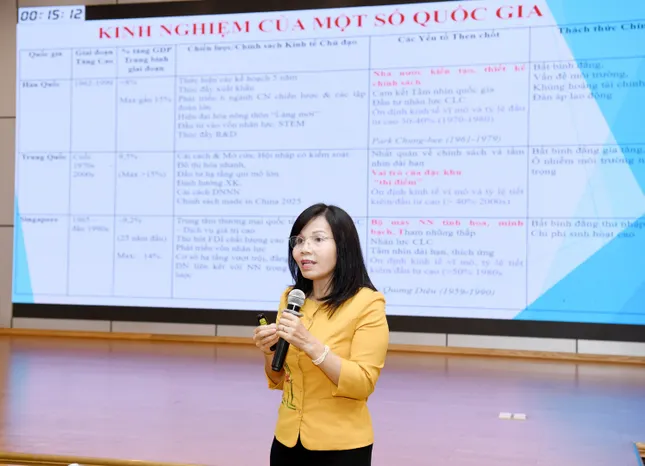
Professor Tran Thi Van Hoa proposes three growth scenarios.
Professor Tran Thi Van Hoa from the National Economics University, citing World Bank data, noted that the current high-income threshold stands at $14,006 USD. Assuming a global average inflation rate of 3% per year, this threshold could rise to $26,835 USD by 2045. Meanwhile, with a population growth rate of 0.7% annually, Vietnam needs to achieve an average GDP growth rate of 9.5% per year to qualify as a high-income country.
Ms. Hoa proposed three growth scenarios. Scenarios A and B aim for moderate growth, which is easier to achieve but has limited breakthrough potential. As a result, per capita GDP by 2045 would only reach approximately $18,000 – $25,000 USD, failing to surpass the threshold for a developed nation.
In contrast, Scenario C is more ambitious, targeting 11-12% GDP growth annually during 2025-2035, thereby lifting per capita income to $28,370 USD by 2045.
Ms. Hoa believes that this scenario is feasible if Vietnam aggressively reforms its institutions, invests heavily in strategic infrastructure, upgrades its human resources, and proactively adopts advanced technology, emulating the successful development model of several East Asian countries.
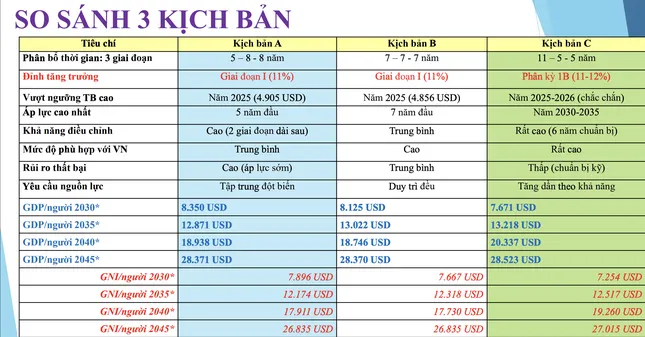
Experts recommend Scenario C, allowing for a longer preparation period for comprehensive reform.
Scenario C’s roadmap is divided into three phases. The first phase (2025-2035) serves as the foundation and acceleration period, focusing on institutional reform, infrastructure development, and attracting high-quality foreign investment. The second phase (2036-2040) aims to consolidate and transform the growth model based on digital technology, automation, and knowledge-intensive services. The final phase (2041-2045) concentrates on refining the market economy, fostering innovation, enhancing sustainable development, and deepening international integration.
Proposal to Establish a “Quick Response Team”
Dr. Vu Sy Cuong from the Academy of Finance emphasized that finance and budgeting are prerequisites for achieving these goals. He highlighted that state budget management is crucial and influences the implementation of policies and development plans.
“If we set numerous goals and plans, but the financial flow cannot keep up, and there are no accompanying financial resources, it will be challenging to execute any strategy,” Dr. Cuong said. He pointed out that while amendments to laws related to finance and budgeting are being proposed, they are rarely discussed, even during the recent National Assembly session, where the focus was primarily on local government structures.
“Otherwise, once the apparatus is established, it will take a few more months to revert to building budget content—a delay that is concerning because, during that time, almost all activities are stagnant,” he added, expressing his concern.
Associate Professor Dr. Pham The Anh emphasized that the foundation for high economic growth lies in macroeconomic stability. However, Vietnam’s monetary policy lacks independence. The State Bank of Vietnam is under the direct control of the government, unlike the independent central bank model commonly found in many developed countries.
Dr. The Anh suggested that the National Assembly should be the body that sets the macroeconomic management targets, while the State Bank of Vietnam should have full autonomy in choosing the tools and methods to achieve those targets without government intervention. Enhancing independence and transparency will boost the policy’s credibility, build trust, and encourage long-term investment.
Additionally, the expert warned about the significant gap between policy and implementation. While high-level directives and resolutions are considered correct, the actual implementation process is often slow and lacks effectiveness.
To address this issue, Dr. The Anh proposed establishing “quick response teams” to promptly receive and handle obstacles faced by businesses and citizens, ensuring that policies are not just confined to paper but are truly brought to life.
The Economic and Social Affairs Standing Committee Meeting: A Comprehensive Review
On the evening of June 2, Prime Minister Pham Minh Chinh chaired a meeting of the Government’s Standing Committee to discuss preparations for the upcoming regular Government meeting for May 2025.
The Average Vietnamese Income Script Achieves $28,370 Annually
According to experts, for Vietnam to join the ranks of high-income countries, there needs to be a period where its GDP growth reaches double digits (over 10%). This is an unprecedented threshold, an ambitious goal, yet not an impossible one. An ambitious scenario targets an 11-12% annual GDP growth rate during the 2025-2035 period, elevating per capita income to $28,370 by 2045.
The Insurance Business is Missing Out on Investment Opportunities
In the first quarter of 2025, the low-interest-rate environment made deposit investments less appealing, significantly impacting the financial profits and overall profit growth of numerous non-life insurance companies.

